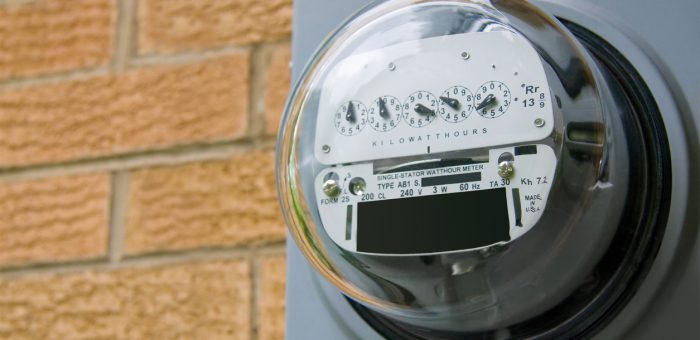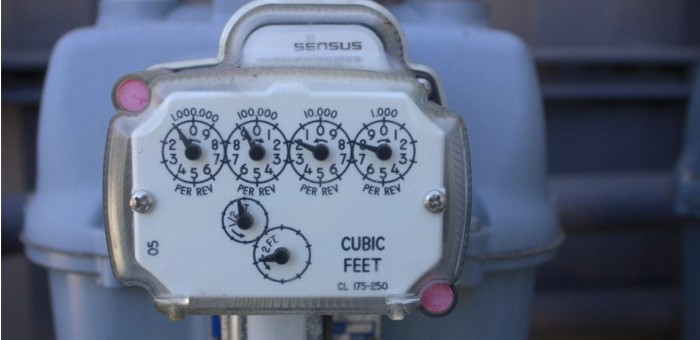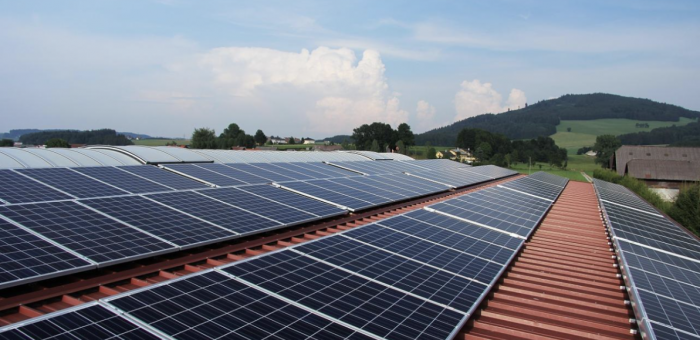From providing houses with power to allowing nearly instant global communication, electricity plays a massive role in the average person’s life. Electricity may not be something you think about much, but this can lead you to overpaying for your electricity plans or missing out on the latest available technologies, such as solar technology.
The popularity of solar technology has increased over the last few decades because equipment like solar panels offers a renewable and affordable alternative to nonrenewable and expensive energy sources like fossil fuels. If you’re searching for a more sustainable, cost-effective energy alternative to save money on your electrical plan, then solar panels are certainly the way to go. However, it’s important to understand the main differences between monocrystalline vs polycrystalline solar panels and those between the available energy plans.
[solarcta]
Table of Contents
Mono vs Poly Solar Panels: What’s the Difference?
When to Choose Polycrystalline Panels
When to Choose Monocrystalline Panels
Which Solar Panel Option is Right for You?

Mono vs Poly Solar Panels: What’s the Difference?
While the purpose of all solar panels is to derive and convert energy from the sun, not all solar panels are created the same. Two of the most popular solar panel types on the market are:
- Monocrystalline solar panels. Known simply as mono solar panels, they’re composed of photovoltaic (PV) cells each made up of a single silicon crystal. Using single silicon crystals in the design of mono solar panels allows for electricity to flow more efficiently between the PV cells.
- Polycrystalline solar panels. Also called poly solar panels, they are made up of multiple silicon crystals molded together within each PV cell. Because there’s less space within every cell, the electrical flow in these panels is less efficient. Still, poly panels have their benefits, specifically their affordability.
Besides the differences between mono vs poly solar panels, you may also want to consider the specifications of the electricity providers and power grids in Texas. For example, Texas has its own power grid and over 130 electricity providers, so energy plans available in Texas are numerous and varied. Power Wizard can help save you time and money by providing you with all available energy plans in your area.
Here is a breakdown of the main differences between mono vs poly solar panels:
Cost Difference
The price difference between monocrystalline vs polycrystalline solar panels is often the most important difference that affects the buying decision for most customers. Mono solar panels tend to be far more expensive than poly solar panels because the manufacturing process for mono panels is more complicated. On average, a standard 6,000-watt monocrystalline system costs $6,000 to $9,000, while a standard 6,000-watt polycrystalline system costs between $5,400 and $6,000. Besides the cost of the panels themselves, the price of installing either type of solar panel can range anywhere from $6,000 to $18,000, depending on various factors, like the wattage you need, your location, and your installation provider.
Difference in Aesthetics
In terms of aesthetics, mono panels often have a black hue to their cells, whereas the cells of poly panels will have various shades of blue. Mono panels are often the preferred choice for aesthetic purposes because the darker color tends to blend better on roofs. Nonetheless, the overall look of either type of panel does not really have an effect on the efficiency.
Temperature Coefficient
The temperature coefficient is the percentage of how much power from a solar panel is lost because of rising temperatures. Thus, the higher the temperature, the more power that is lost. Mono panels have a lower temperature coefficient than poly panels, which means that they tend to perform better than poly panels as temperatures rise.
Type of Silicon
Ultimately, the way mono and poly solar panels use silicon is directly responsible for the panels being different from one another. Mono panels use a single high-purity silicon crystal in the construction of each cell, whereas poly panels use multiple low-purity silicon crystals molded together. The use of a single silicon crystal results in electricity being able to flow more freely through mono panels due to more available space.
Efficiency Rates
Mono panels consistently outperform poly panels, because mono panels have a lower temperature coefficient, perform better in lower light, and have only one silicon crystal within each cell. All three factors allow mono panels to conduct and convert electricity far more efficiently than poly panels, which considerably increases their efficiency rates.
25-Year Warranty for Most Monocrystalline Panels
The lifespan of a mono panel is normally around 25 years, but they may last much longer. So, mono panels usually come with a 25-year warranty. However, the lifespan of poly panels tends to be much shorter because their temperature coefficient is relatively high. Therefore, different poly panels can have varying warranty periods.
When to Choose Polycrystalline Panels
Though monocrystalline panels tend to outperform polycrystalline panels in many areas, there are still a few reasons why they might be the better option. The most notable reason is their price. Poly panels are a fantastic option for those looking for a more affordable solar panel type. Polycrystalline solar cell panels cost less to produce, which means they cost less to purchase.
Another reason you might wish to choose poly solar panels is that they are more sustainable than mono solar panels. This is because poly panels waste less material during the manufacturing process than mono panels do.
[solarcta]
When to Choose Monocrystalline Panels
If price isn’t a major factor affecting the type of panel you buy, then mono panels are certainly the way to go — they are far more efficient than poly panels. Their power output is higher, waste less power, and perform better in less-than-ideal conditions. Though they are a bit more expensive than poly panels, they are certainly worth the price. If you live in a hot or less sunny climate, mono panels can generate more power than poly panels.
Which Solar Panel Option is Right for You?
The decision to choose between mono vs poly solar panels largely depends upon your individual needs. If you need a great deal of power output, then mono panels will suit you better than poly panels. Mono panels are also ideal for those who live in areas with less light or warmer climates, like Texas. If budget or sustainability is a concern for you, then poly panels will be a better fit.
By choosing the right solar panel type and an electrical plan to go with your new panels, you’ll greatly improve your energy efficiency levels and save money too. In the end, investing in solar panels is an amazing way to save money while helping the environment.
To learn more about solar energy and available electrical plans in Texas, visit Power Wizard’s How it Works page for in-depth explanations and service offerings that’ll help you save money on your electrical bills. With our Silver DIY or Gold plan, the process of finding the best energy plan will be a breeze. Our calculator tool will help you compare plans available in your area — all customized to your individual needs.
[solarcta]
More From the Power Wizard Blog
-
Affordable Electric Bill: Power Wizard’s Promise of Protection
Sarah, a proud Texan, knows that everything is bigger in Texas – including the choices when it comes to electricity providers. She’s no stranger to the complexities of deregulated energy markets. With a bustling household, she juggles work, family, and keeping the lights on. But there’s one thing Sarah doesn’t want to juggle: her electric bill. […]
View Article -
Vampire Energy: How Phantom Power Drains Your Wallet and the Environment
Imagine your home filled with silent energy sippers, lurking in the shadows, unnoticed yet constantly draining power and your wallet. Vampire energy, or phantom load, refers to the electricity electronic devices consume, even when turned off or in standby mode. These energy vampires are prevalent in every household and workplace, from the charger left plugged […]
View Article -
Do Solar Panels Increase Home Value?
The United States now has more than 6,000 people who work in the solar power industry and help us enjoy the benefits of this amazing technology. As solar panels become more and more common, some people are wondering, “Do solar panels increase home value estimates?” The truth is that solar panels can provide a long list of […]
View Article -
What Is Net Metering and How Does It Work?
A staggering 1300% increase. That’s how much the number of electric customers engaging in net metering skyrocketed from 2010 to 2020. But what is behind this surge? What exactly is net metering, and how could it potentially change the way you view your electricity consumption? The journey from an ordinary consumer to a potentially profitable one […]
View Article -
The Top Sources of Carbon Emissions in the U.S.
Climate change due to rising global temperature seriously threatens the natural ecosystem. It can result in erratic weather featuring intense drought, heat waves, melting ice caps, warming oceans, and increased storms when left unchecked. As the impact of climate change worsens, the risk of biodiversity loss and human extinction gets bigger. Table of Contents What […]
View Article -
California Solar Tax Credit & Incentives for Residential Rooftop Solar
Are you considering investing in residential solar panels in California? You’re not the only one. Research shows that California was ranked number one out of 50 states in 2022 for solar power generation, with more than 11 million homes powered by the sun. A major reason why solar power is popular statewide is that prices have dropped […]
View Article -
What Should You Include in an Energy Efficiency Audit?
Rising energy costs mean higher electricity bills, and for the average homeowner or business, a little savings each month can add up to extra cash at the end of the year. If you’re looking for ways to reduce your home’s energy consumption, performing a home energy audit is a great place to start. Table of […]
View Article -
How to clean your solar panels
Click on a section to skip directly to it: Why is it important to clean your solar panels?Solar panel cleaning: a step-by-step breakdownMake sure you’re saving the most on your monthly energy bill Have you considered installing a renewable energy source at your home? Power Wizard recommends trying solar energy, which accounts for 3% of […]
View Article













